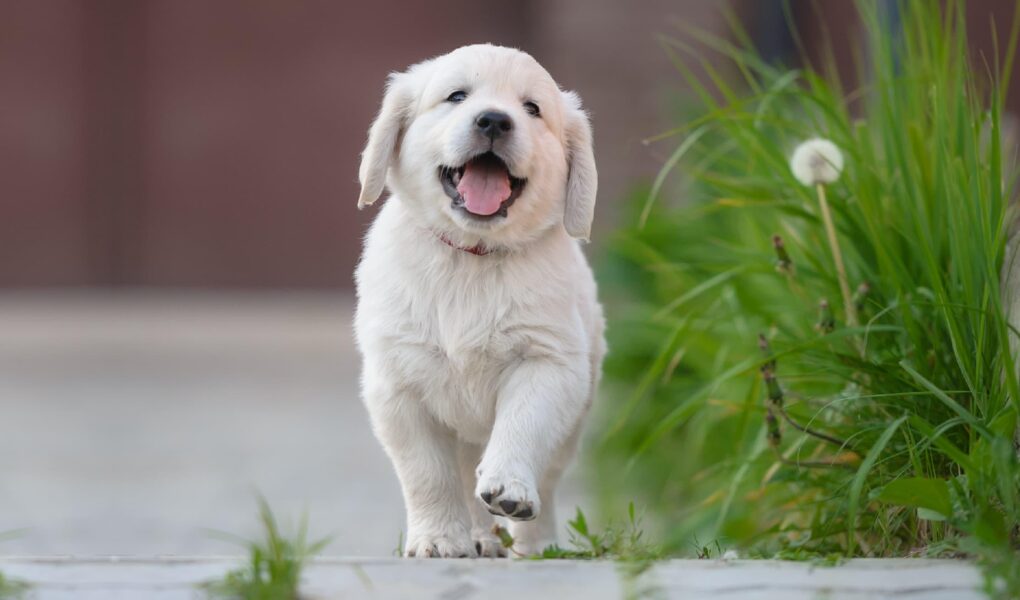Title: Understanding the Whine: Navigating the New Puppy Experience
Welcoming a new puppy into your home can be an exhilarating adventure filled with cuddles, playtime, and the promise of companionship. However, amidst the joy and excitement lies a sound that can tug at the heartstrings—and, perhaps, fray the nerves: the unmistakable whine of a young pup. This vocalization, often infused with confusion and distress, serves as your new furry friend’s way of communicating needs and feelings. But what does it mean when your puppy whines? In this article, we’ll explore the various reasons behind this behavior, offer insights into their emotional world, and provide practical tips to help both you and your four-legged companion find comfort in the transition. Understanding the language of whines is not just about deciphering the sounds; it’s about building a bond grounded in empathy and trust. Let’s dive into the world of puppy whining and discover how to turn those plaintive calls into harmonious communication.
Table of Contents
- Understanding the Whine: Reasons Behind Your New Puppy’s Tears
- Creating a Calm Environment: Strategies to Soothe Your Pup’s Anxiety
- Training Techniques: Teaching Your Puppy to Communicate Without Whining
- When to Seek Help: Recognizing Signs of Distress Beyond Normal Whining
- Q&A
- To Wrap It Up
Understanding the Whine: Reasons Behind Your New Puppy’s Tears
A new puppy’s tears can evoke a variety of emotions in pet owners, from concern to frustration. Understanding the reasons behind this behavior is crucial in helping your furry friend feel more settled. Common triggers for whimpering and whining include:
- Separation Anxiety: Puppies are social beings and may feel lonely when left alone.
- Hunger or Thirst: A whine could indicate that they are in need of food or water.
- Need to Eliminate: Puppies have small bladders; if they need to go outside, they may vocalize.
- Fear or Stress: New environments can be overwhelming, leading to anxiety-induced whining.
- Attention Seeking: Puppies quickly learn that whining can elicit a response from their owners.
Creating a secure and nurturing environment can minimize these tearful moments. Consider implementing strategies such as the following:
| Strategy | Description |
|---|---|
| Establish a Routine | Consistent feeding and bathroom breaks can help reduce anxiety. |
| Create a Safe Space | Provide a cozy bed and toys to make them feel comfortable. |
| Positive Reinforcement | Reward quiet behavior to encourage calmness. |
| Gradual Alone Time | Practice leaving them alone for short periods to build confidence. |
Creating a Calm Environment: Strategies to Soothe Your Pup’s Anxiety
Creating a peaceful sanctuary for your new puppy can make a significant difference in easing their anxiety. Start by designing a cozy, designated space in your home where your pup can feel safe. You might want to include a comfortable bed or blanket, familiar toys, and even a piece of your clothing to provide a sense of security. Consider the room’s noise levels; some puppies may feel calmer in quieter areas away from too much foot traffic. Additionally, think about soothing scents – utilizing calming essential oils (like lavender) in a diffuser can create a relaxing atmosphere.
Routine is essential for building a sense of stability in your puppy’s life. Regular feeding times, scheduled play sessions, and consistent training can help your furry friend feel more grounded. It might also be beneficial to incorporate interactive toys or puzzle feeders that keep your pup engaged and distracted from their anxiety. Here’s a quick reference table for calming strategies that you can easily implement:
| Calming Strategy | Description |
|---|---|
| Safe Space | A quiet area with a cozy bed and familiar scents. |
| Calming Sounds | Soft music or white noise can help mask loud sounds. |
| Routine | Consistent feeding and play schedules to provide stability. |
| Interactive Toys | Engaging toys to distract and occupy your pup’s mind. |
Training Techniques: Teaching Your Puppy to Communicate Without Whining
Teaching your puppy to express its needs without resorting to whining can be both a rewarding and essential part of their training. Start by establishing clear communication cues that your puppy can learn to associate with specific needs, such as going outside, wanting to play, or needing food. Use consistent commands and reward their attempts to communicate in appropriate ways. For example, if you want them to signal for potty time, consider training them to use a bell at the door. Every time they ring the bell, take them outside to reinforce the behavior.
Incorporate positive reinforcement techniques to further encourage non-whining communication. Whenever your puppy successfully expresses a need without whining, offer treats and praise. This nurtures a positive association with silent communication and helps them feel secure in expressing their wants. You can enhance this training by setting specific times for practice, like during meal times or play sessions, which can prevent frustration and reinforce understanding. Remember, patience and consistency are key as you navigate this learning journey together.
When to Seek Help: Recognizing Signs of Distress Beyond Normal Whining
As you welcome your new puppy into your home, it’s common to experience a bit of whining as they adjust to their new environment. However, it’s essential to differentiate between typical puppy vocalizations and signs that something may be wrong. Look for these distinct behaviors that may signal increased distress:
- Persistent Whining: Continual crying that lasts for long periods without breaks.
- Physical Signs: Excessive drooling, pacing, or shivering that doesn’t align with normal puppy behavior.
- Increased Hyperactivity: Overexcitement that leads to destructive behavior, such as chewing on furniture or tearing up items.
- Lethargy or Withdrawal: A sudden drop in energy levels or a tendency to hide away from family members and other pets.
It’s crucial to observe any shifts from your puppy’s normal demeanor. If you notice several of these signs occurring together, it could indicate a deeper issue, such as anxiety or physical discomfort. Consider the context in which the whining occurs:
- Change in Environment: Have there been any recent changes, such as moving to a new home or starting a new routine?
- Health Concerns: Are there signs of illness, like changes in appetite or bathroom habits?
- Separation Anxiety: Is the whining more pronounced when you leave the room or house?
Q&A
Q&A: Addressing Your New Puppy’s Whining
Q1: Why is my new puppy whining?
A1: Whining is a common form of communication for puppies. It can signify a range of feelings, including anxiety, hunger, or the need to go outside. As new additions to the family, puppies often whine due to the stress of adjusting to a new environment away from their mother and littermates.
Q2: How long can I expect my puppy to whine?
A2: Every puppy is different, but typically, the intensity and frequency of whining tends to diminish over time as they become more comfortable in their new home. This process can take anywhere from a few days to a few weeks, depending on the individual temperament of your puppy.
Q3: Should I ignore my puppy when it whines?
A3: Ignoring whining can be effective if you’re confident the puppy is not in immediate distress, such as needing a bathroom break or being hungry. However, it’s essential to be mindful and ensure that you’ve addressed all their needs prior to doing so. If the whining continues without clear cause, consulting a vet or a trainer can offer insight.
Q4: What can I do to help soothe my whining puppy?
A4: There are several strategies to help calm your pup. Creating a cozy, safe space with bedding and a familiar object, like a blanket or toy, can make them feel more at home. Regular exercise and playtime can also expend some of that excess energy and keep boredom at bay.
Q5: Is there a specific age when puppies are more prone to whining?
A5: While puppies can whine at any age, it is particularly common during the first few weeks of adjustment after moving to a new home, typically between 8 to 12 weeks old. This is a crucial developmental period during which they may feel insecure and overwhelmed.
Q6: How can I train my puppy to stop whining?
A6: Positive reinforcement is key. When your puppy is calm and quiet, reward them with treats or praise. Gradually increasing the time they must remain quiet before receiving praise can reinforce desirable behavior. Consistency is essential for establishing good habits.
Q7: What if my puppy’s whining seems excessive?
A7: If your puppy’s whining seems more excessive than normal or if they are showing signs of distress, it’s important to consult a veterinarian. Underlying health issues, like separation anxiety or other behavioral conditions, may require professional guidance.
Q8: Can my own behavior affect my puppy’s whining?
A8: Absolutely! Our reactions to whining can influence a puppy’s behavior. If you respond immediately to whining with attention, it can inadvertently reinforce that behavior. Setting boundaries and consistently addressing their needs without overindulgence can help shape a more balanced response.
Navigating the world of puppy parenting can be challenging. But with patience and understanding, you can help your new furry companion adjust, leading to a happier and more harmonious home.
To Wrap It Up
As your new puppy settles into their forever home, it’s natural to encounter a few moments of whining along the way. Remember, this behavior is often a reflection of their need for comfort, companionship, or relief from anxiety. By staying patient and attentive, you can help your furry friend navigate this transitional phase with confidence. With time, consistent training, and plenty of love, the whines will transform into wagging tails and joyful barks. Embrace the journey, as each day brings new lessons and memories. Your puppy is not just learning to live in a new space—they’re also learning to trust and bond with you. Soon, the whimpering sounds will be mere whispers in the joyful symphony of a life filled with adventures together. Happy puppy parenting!


